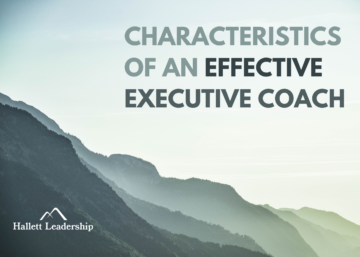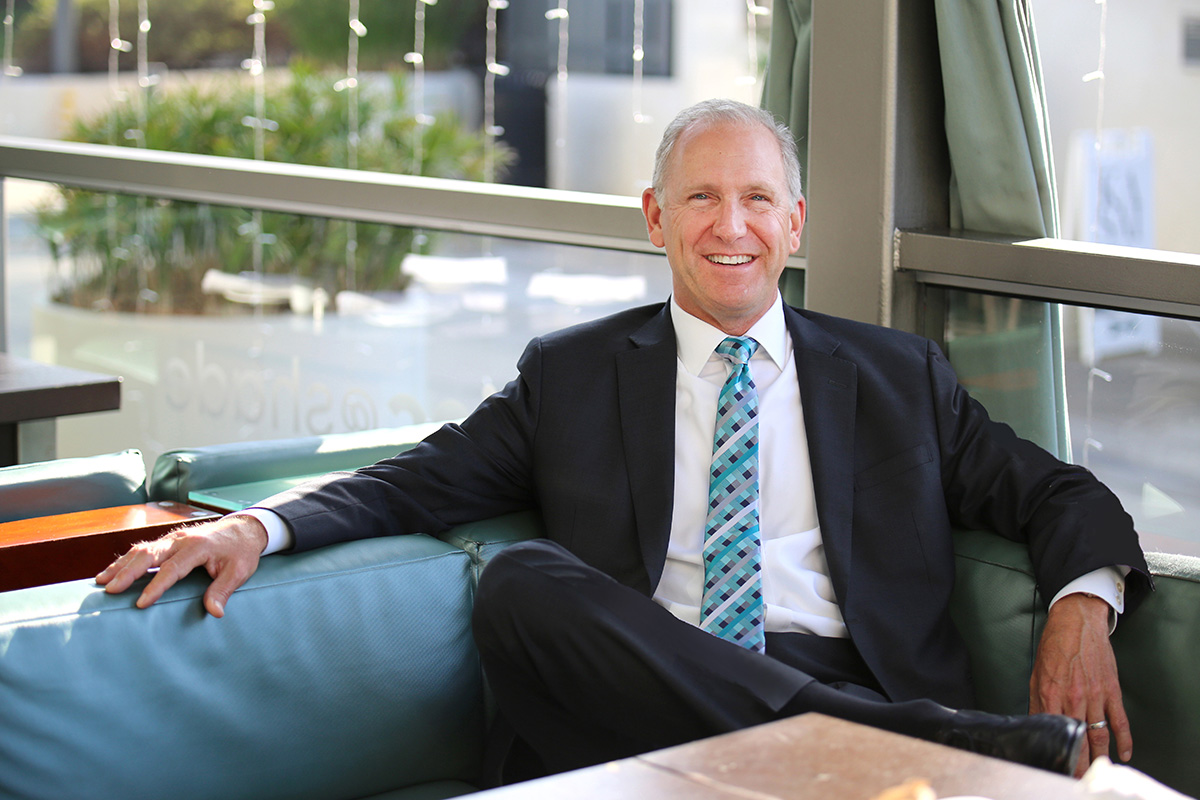In an optimal scenario, organizations engage an executive coach to support an individual, or group of individuals, in order to shift senior management into high performance. The logic suggests that more effective leaders create better results which leads to increased profitability.
With the ultimate goal of executive coaching leading to increased profitability – what is the path to follow to get there? What are the most worthwhile development goals to aim at during an executive coaching engagement?
Each coaching engagement begins at the individual level of focus, then gradually dilates outward to how the individual can wield an improved, beneficial influence on the team.
Learn To Give & Receive Feedback
The executive’s most valuable (and least expensive) tool is feedback. Every human being has blind spots. They may from time to time behave in ways that are unconscious and automatic, and these attitudes and behaviors can sometimes have a negative influence on the team. Furthermore, the individual may be so busy on the task at hand that they have no clue about how they are influencing and being perceived by other members of the team. They are unconscious as to the wake they leave in their path.
Feedback solves this problem. It brings people into a shared reality. The person receiving the feedback gains insight into how their behavior and conduct is being perceived by other members of the team. With this valuable information in hand, the individual in question has a new option available to them that they didn’t have before they got the feedback – they can make a new choice!
At times, we might consider withholding feedback, for fear of creating discomfort, in what is truly a selfish act. The reality is, withholding respectful and honest feedback is also withholding from a team member the opportunity to grow – and become a better team member! Since feedback can stimulate an individual’s growth and development, it may even be appropriate to consider providing respectful and honest feedback as an act of kindness.
Feedback can diffuse tension among members of a team, and it can bring them into a shared operational reality. So, while giving and receiving feedback might feel uncomfortable at times, we like to think of it as great medicine that may not always taste the best, but improves our organization’s overall well being.
Before introducing the entire team to the process of giving and receiving respectful and honest feedback – something Hallett Leadership facilitates extensively in the Accelerated Leadership Program – an executive has the opportunity to practice and master this simple and potent art form with their coach.
Learning how to respectfully offer and graciously receive feedback is a basic ingredient in high performance leadership, and an incredibly relevant early development goal for an executive coaching engagement.
Develop Awareness of Blind Spots
As we mentioned above, everyone has blind spots. We might think of them as basements where we store our automatic behaviors, assumptions about the world, and fixed beliefs about life and people. Often, these drivers of our unconscious behavior are built into our neurology and our nervous systems. They are largely responsible for how our entire personal and professional lives are playing out – both the good and the bad.
Therefore, part of an executive coach’s mission to support the client in attaining the next level in their development as a business leader is raising the client’s awareness of their blind spots.
This may be a precarious process in the beginning. Executive coaches must rigorously adhere to confidentiality and the highest ethical standard, because supporting the client in becoming aware of blind spots can be very personal. Blind spots that inhibit the client from operating at a high performance level, or realizing full potential, are typically influencing other domains of their life, such as family, community, and personal health and well being.
Though it may feel uncomfortable, or downright frightening – or even exciting! – prioritize exploring blind spots with your executive coach. Growth in the domain of greater self-awareness always leads to better outcomes, according to this simple sequence:
Better Awareness -> Better Choices -> Better Results
Cultivate Vulnerability
“Vulnerability is not winning or losing; it’s having the courage to show up and be seen when we have no control over the outcome. Vulnerability is not weakness; it’s our greatest measure of courage.” – Brené Brown
There is an attitude among many in the business world that vulnerability equals weakness, which represents defeat by rivals and competitors and losing the game.
To be clear, when we bring forward vulnerability as a key attribute to develop during an executive coaching engagement, we are not advocating emotional breakdowns in front of team members, or “oversharing” personal information in a work environment.
By vulnerability, we mean the courage to be authentically human. To be willing to say “I don’t know the answer… what do you think?” Vulnerability might be asking members of a team how they are doing at the beginning of a meeting, and then genuinely listening to their responses.
It also might look like the willingness to deeply listen to someone without an agenda, judgement or distraction, and really attempt to understand their experience and perspective. Or to receive feedback from someone and allow yourself to feel the emotions that come up in response – without lashing out or holding negative feelings about that person.
To the point, an executive who embodies vulnerability like this, has increased positive influence within the team. Some people will feel empowered to follow such an example – by taking down some of their own walls, and making more authentic connections with the people around them.
While vulnerability is not necessarily a business strategy or framework, it can be thought of as a lubricant that primes the high performance engine; it facilitates development of stronger, more open and trusting relationships among members of the team. People who are open and trusting with each other can collaborate more effectively, and so on…
Exploring the process of leaning into vulnerability is an incredibly worthwhile goal for you and your executive coach.
Create An Environment Of Mutual Trust & Respect
After an executive begins creating an environment favorable to human connection by modelling vulnerability, the stage is set to prioritize developing an environment into one of mutual trust and respect.
Creating an environment of mutual trust and respect can take time, but to eliminate it takes only a single incident. For example, someone loses their temper and scolds someone else in front of the team.
The executive who has been working on feedback, blind spots, and vulnerability with their coach, is now prepared to apply these individual skills in the team environment.
The first benchmark toward transforming an entire organization into a place where high performance is the norm, begins with creating an environment of mutual trust and respect. One way of thinking about it is, if the new high performance culture is a skyscraper, the first step is to make sure the plot of land where you are building has a solid foundation. Likewise, high performance organizations are built on healthy workplace environments where people are open and trusting with each other (clean and level.)
So set the foundation of your team’s work environment – eliminate unhealthy rivalries or silent, passive aggressive feuds or irritations. These negative influences hinder openness and trust, and preclude strong communication and collaboration.
Fortunately, the coached executive now knows what to do to clean and level the team’s work environment: they facilitate a group feedback exchange.
Through regular feedback, and bringing everyone together to connect, discuss, and share ideas as a group, the executive can succeed in building a solid foundation for the team work environment – establishing it as a place of mutual trust and respect.
Having demonstrated working knowledge of each of the four executive coaching development goals, the executive and coach are ready to prioritize the next stage in the process of fostering high performance at every level of the organization.
In this next stage, the coaching engagement transitions from the individual area of focus, to applying lessons learned in a team context. Now, it is time for the executive to inspire, empower, include, and lead.
We have written extensively about this process of facilitating high performance teams and organizations here on the Hallett Leadership blog, and invite you to explore other articles about the sequence of creating high performance teams.





